Dimmable Spot GX53 with adjustable illumination angle
Talking about the new generation of IKEA LED lamps, I did not pay attention to the interesting feature of the GX53 spots: they turn the lens and change the angle of illumination.
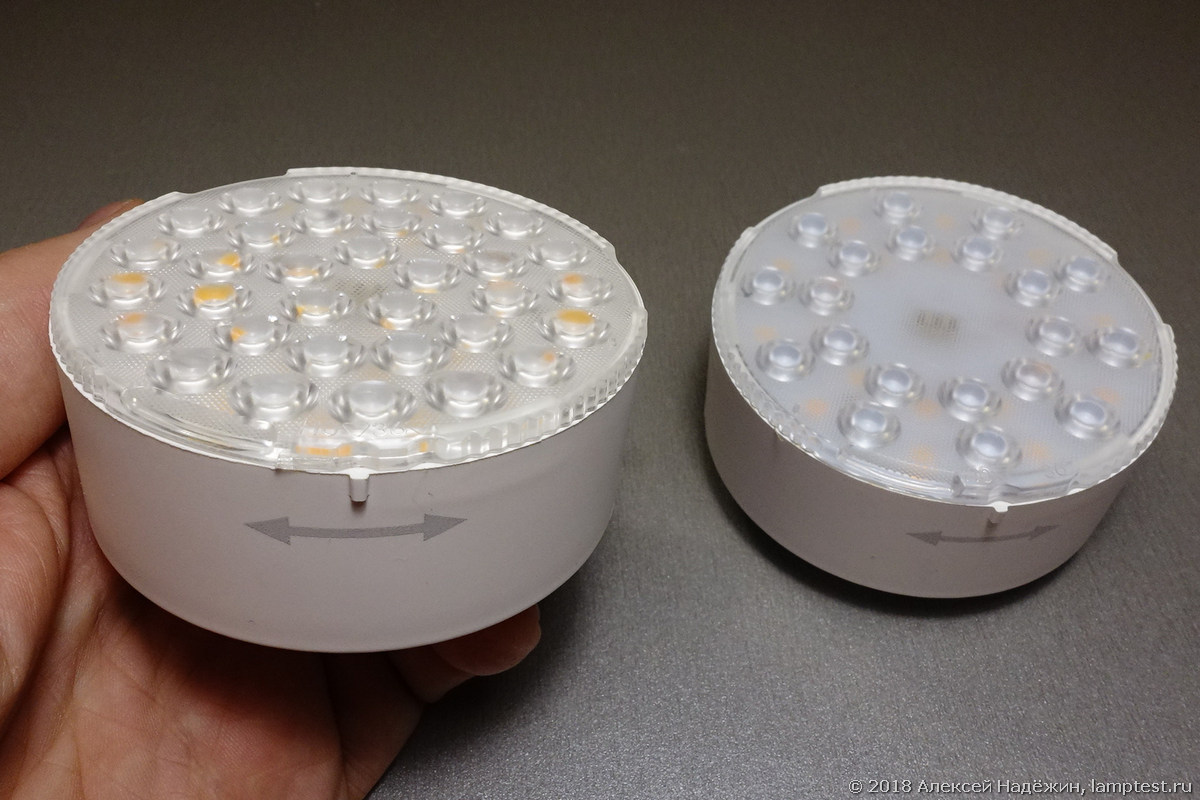
Two spots with GX53 bases are now on sale in Ikea:
600 lm 703.651.00 LED1707X7 for 399 rubles;
1000 lm 603.650.92 LED1706X11 for 499 rubles.
')
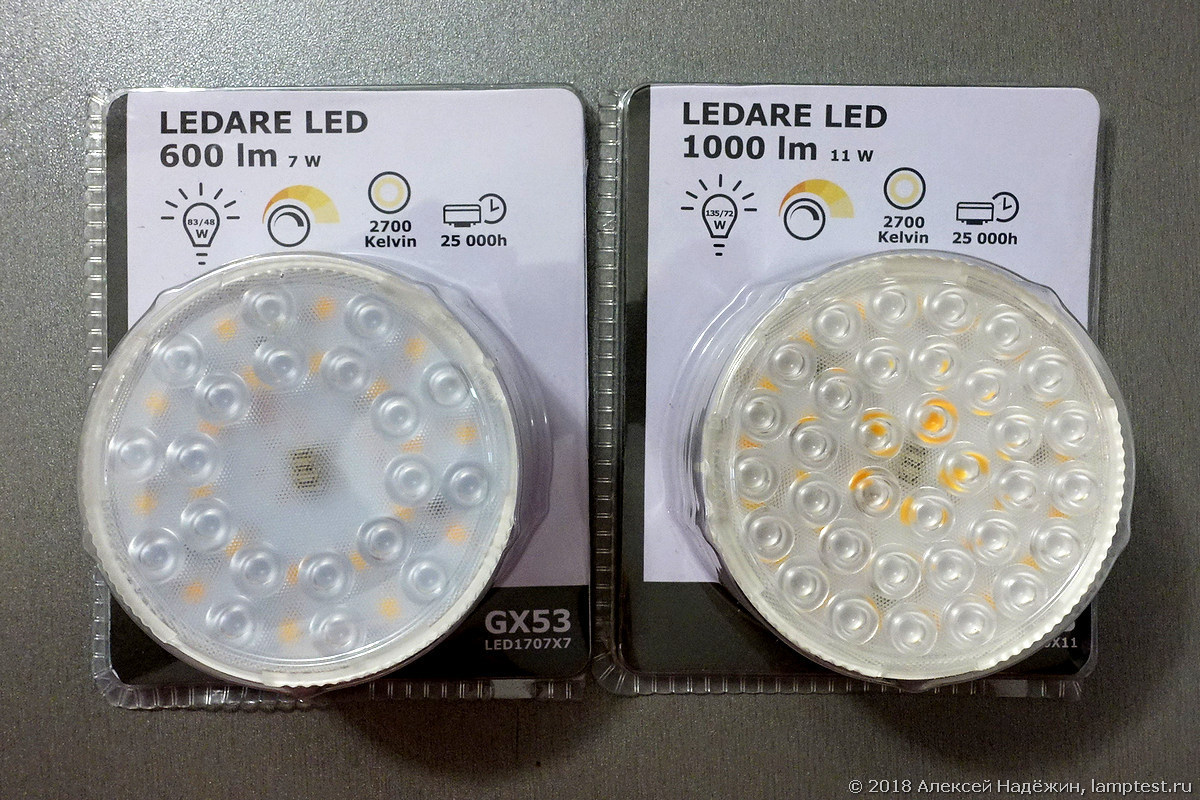
Plastic lining with lenses can be rotated. In one position, the lenses are located above the LEDs.

In another position above the LEDs, there is simply a corrugated surface.
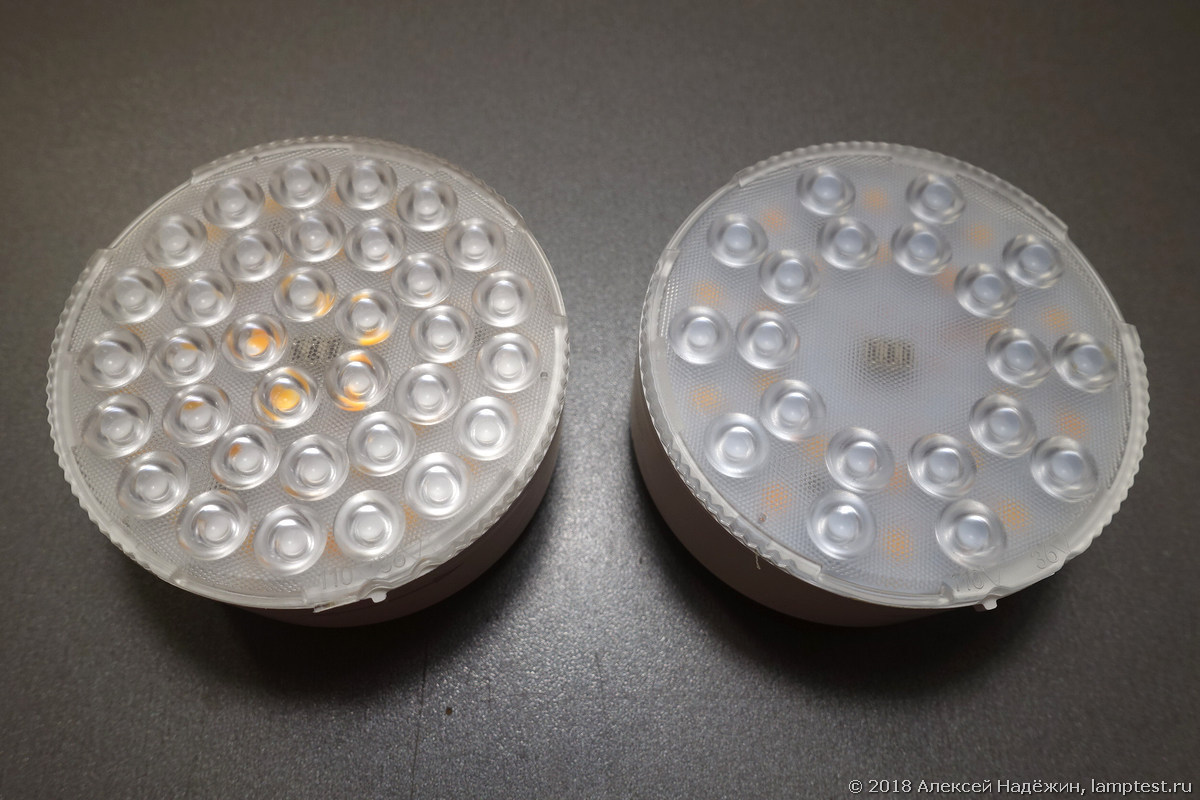
In the first position, spots give a narrow beam of light with an angle of 34-35 degrees, in the second - uniform illumination with an angle of about 100 degrees.
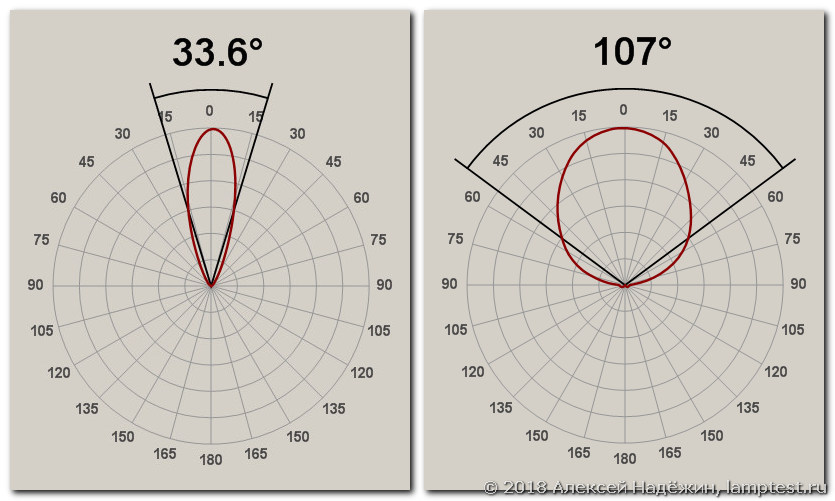
This is what a spot of light on the wall looks like from a distance of about 80 cm in the mode of a narrow angle of illumination.
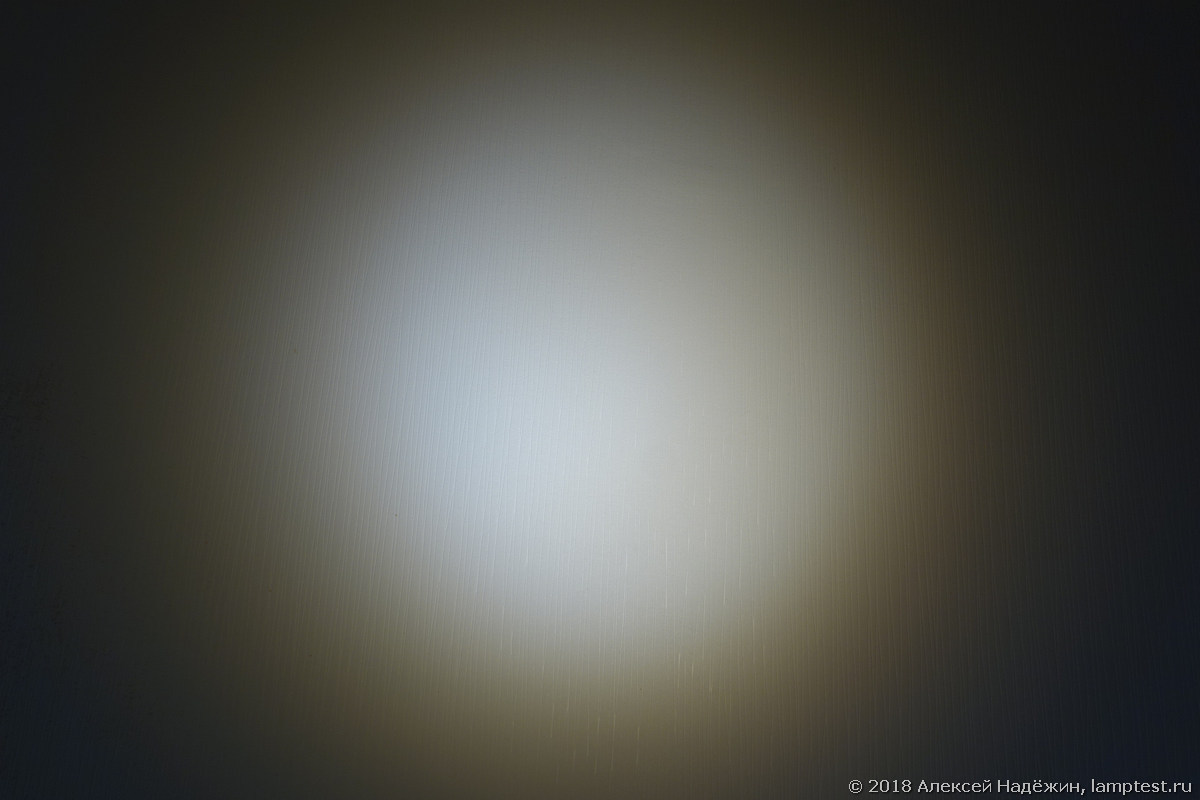
In wide-angle mode from the same distance the wall is illuminated evenly.

Halogen spots have a narrow angle of illumination, and most LED spots have a wide angle and when they are installed in the ceiling in a large enough room, there is a glare effect (I wrote about this problem ). In such cases, the narrow-angle mode allows you to completely remove the effect of glare. If the spots are set in a small room, where it is simply impossible to look at them from the side (for example, in the bathroom or toilet), you can set a wide angle for even illumination.
According to the results of my measurements in the narrow-angle mode, these spots give 680 lm and 1105 lm. In wide-angle mode - 610 and 1050 lm. The CRI (Ra) color rendering index is very high - 91.9 and the quality of light is close to the quality of light from incandescent bulbs. However, there is a pulsation of light of 12-18%, which is absolutely indistinguishable by the eyes, but visible through the camera of the smartphone. I note that the 60-watt incandescent lamp has a ripple factor of 12%, and a 40-watt bulb has about 20%.
In both spots, a new dimming system with a variable color temperature is applied - the light is more yellow at low brightness than at high brightness. Color temperature when adjusting the brightness varies from 2000K to 2700K. This is achieved through the use of two groups of LEDs with different color temperature. Here's how it works (using the example of the spot GU10):
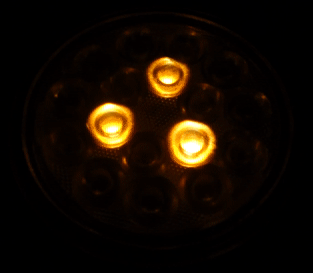
It is important to know that IKEA LED spots with a GX53 base are much thicker than other spots with such a base - their thickness is 40 mm, while for ordinary lamps it is 22-28 mm.
IKEA continues to lead the way for all LED lamps, even though the lamps are not the main company profile.
Of all the variety of LED lamps sold in Russia, almost only IKEA has lamps with a color rendition index above 90, only IKEA has dimmable lamps that change the color temperature when the brightness changes, and now only there are GX53 spots with variable illumination angle.
PS I got to Ikea and bought all the lamps that did not get into the previous review. Soon I will test them, publish the results on Lamptest.ru , and then tell you about them separately.
© 2018, Alexey Nadyozhin

Two spots with GX53 bases are now on sale in Ikea:
600 lm 703.651.00 LED1707X7 for 399 rubles;
1000 lm 603.650.92 LED1706X11 for 499 rubles.
')

Plastic lining with lenses can be rotated. In one position, the lenses are located above the LEDs.

In another position above the LEDs, there is simply a corrugated surface.

In the first position, spots give a narrow beam of light with an angle of 34-35 degrees, in the second - uniform illumination with an angle of about 100 degrees.

This is what a spot of light on the wall looks like from a distance of about 80 cm in the mode of a narrow angle of illumination.

In wide-angle mode from the same distance the wall is illuminated evenly.

Halogen spots have a narrow angle of illumination, and most LED spots have a wide angle and when they are installed in the ceiling in a large enough room, there is a glare effect (I wrote about this problem ). In such cases, the narrow-angle mode allows you to completely remove the effect of glare. If the spots are set in a small room, where it is simply impossible to look at them from the side (for example, in the bathroom or toilet), you can set a wide angle for even illumination.
According to the results of my measurements in the narrow-angle mode, these spots give 680 lm and 1105 lm. In wide-angle mode - 610 and 1050 lm. The CRI (Ra) color rendering index is very high - 91.9 and the quality of light is close to the quality of light from incandescent bulbs. However, there is a pulsation of light of 12-18%, which is absolutely indistinguishable by the eyes, but visible through the camera of the smartphone. I note that the 60-watt incandescent lamp has a ripple factor of 12%, and a 40-watt bulb has about 20%.
In both spots, a new dimming system with a variable color temperature is applied - the light is more yellow at low brightness than at high brightness. Color temperature when adjusting the brightness varies from 2000K to 2700K. This is achieved through the use of two groups of LEDs with different color temperature. Here's how it works (using the example of the spot GU10):

It is important to know that IKEA LED spots with a GX53 base are much thicker than other spots with such a base - their thickness is 40 mm, while for ordinary lamps it is 22-28 mm.
IKEA continues to lead the way for all LED lamps, even though the lamps are not the main company profile.
Of all the variety of LED lamps sold in Russia, almost only IKEA has lamps with a color rendition index above 90, only IKEA has dimmable lamps that change the color temperature when the brightness changes, and now only there are GX53 spots with variable illumination angle.
PS I got to Ikea and bought all the lamps that did not get into the previous review. Soon I will test them, publish the results on Lamptest.ru , and then tell you about them separately.
© 2018, Alexey Nadyozhin
Source: https://habr.com/ru/post/429644/
All Articles